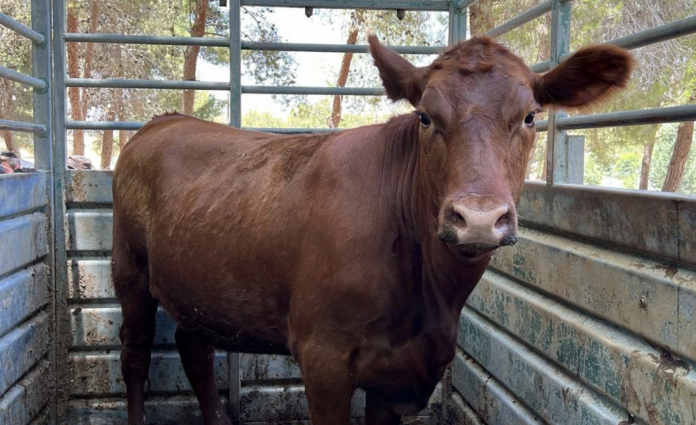

The Ancient Shiloh heritage site will soon host a Red Heifer research center.
Hundreds of visitors flocked to Shiloh in Samaria’s Binyamin region on Thursday to welcome a biblically pure red heifer.
The 22-month-old cow, which was brought to Israel from the United States, found a new home at the Ancient Shiloh heritage site, where the biblical Tabernacle once stood.
In the coming month, two more heifers will be transported to the town, and a center will open there dedicated to researching the phenomenon. The heifers will be kept in a fenced-off area, and visitors will not be able to touch the animals.
The mysterious red heifer, or Parah Adumah, is first mentioned in the Book of Numbers, when God instructs Moses and Aaron to take “a perfectly red unblemished cow, upon which no yoke was laid.” The animal is subsequently slaughtered, and its ashes are used in a purification ritual.
The discovery of an entirely red such heifer is a rarity. Jewish sources state that only nine were slaughtered in the period from Moses to the destruction of the Second Temple in 70 C.E. According to the 12th-century sage Maimonides, the Messiah will offer the 10th red heifer.
In keeping with biblical law, the heifer put on display in Shiloh is completely red, and has never borne a yoke.
“This is an exciting and exceptional event for the entire Jewish people,” said Ancient Shiloh CEO Coby Mamo. “We are already in touch with researchers and promoters around the world who are waiting to come here with large groups. We have returned to the site of the Tabernacle in Shiloh and are bringing back the Jewish past for the future of our people.”
Binyamin Regional Council head Israel Ganz called the cow’s arrival a “historic moment.”
“The Ancient Shiloh site is continuing to grow and develop, and the Red Heifer Center will attract more visitors, up to one million a year, from Israel and around the world,” he added, calling it “good news for the Jewish world, for scientists and researchers, and for everyone.”
The red heifer arrived as part of the council’s Binyamin Temple Conference, which started on Wednesday with a Temple-era dinner.
The conference continued on Thursday with lectures at Tel Shiloh, the center of Jewish life before the construction of the First Temple in Jerusalem. Among other topics, speakers discussed the offering of the Passover sacrifice in modern times, the traditional grape varieties of the region, and urban and logistic planning “in the vision of future Jerusalem.”





